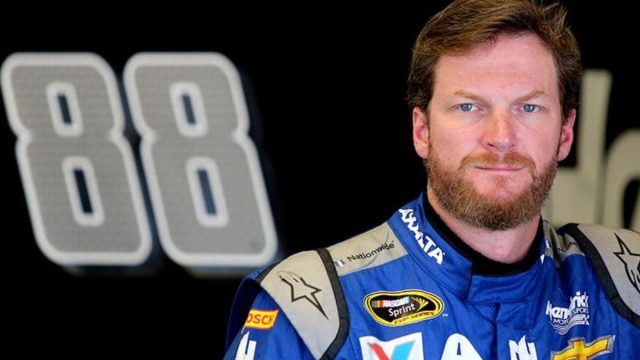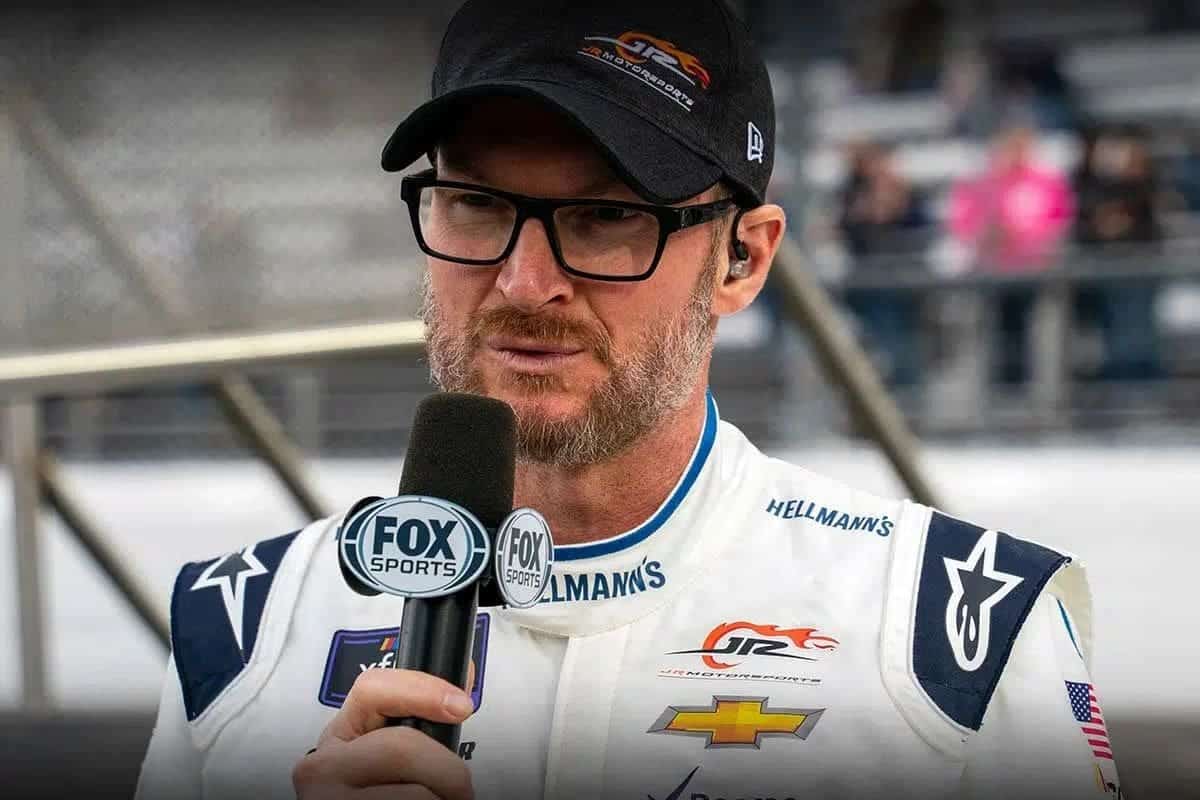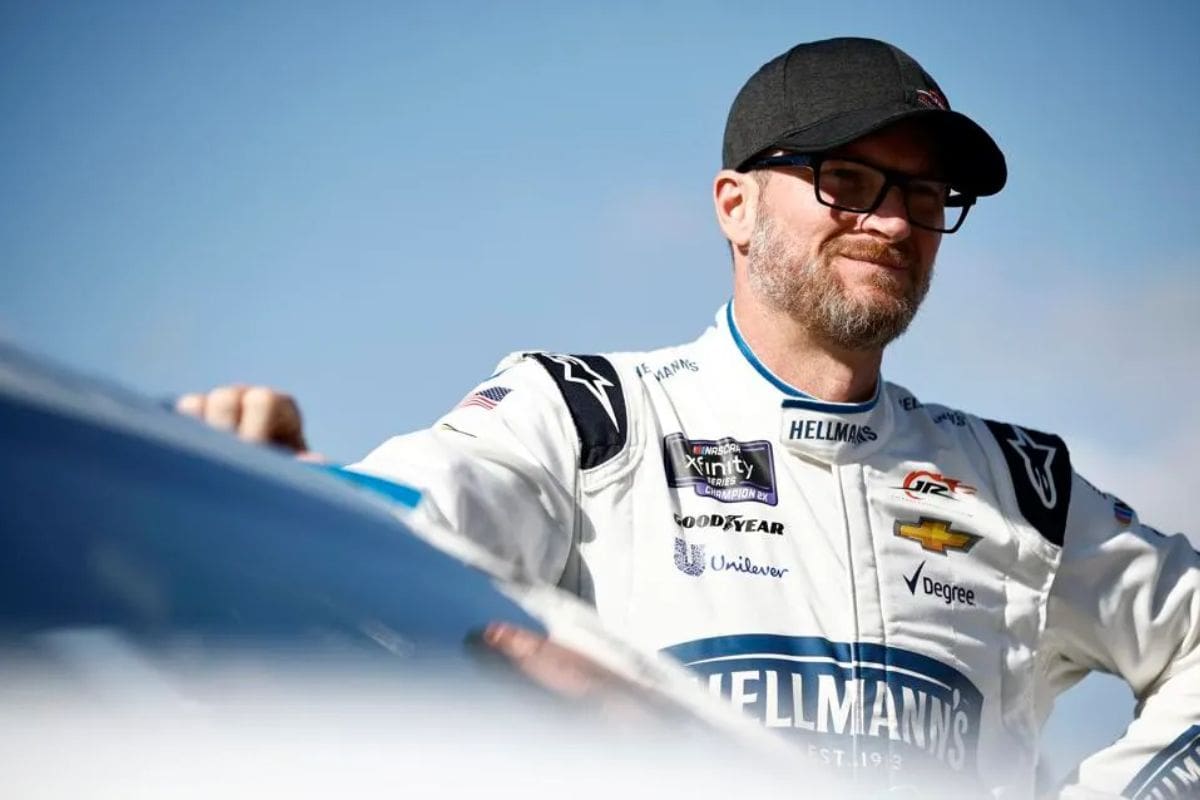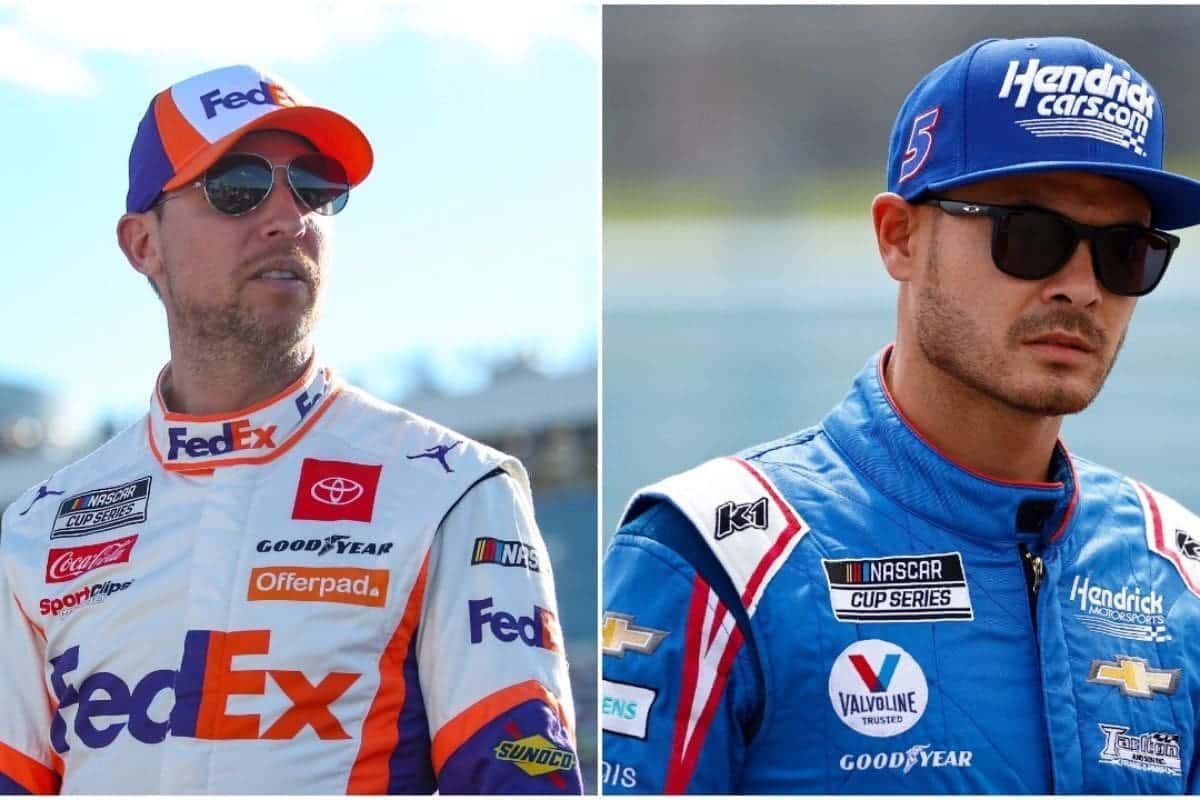Dale Jr Discloses Key Reason: In NASCAR, rivalries are as inevitable as the checkered flag, and the recent friction between Denny Hamlin and Kyle Larson is no exception. Dale Earnhardt Jr.‘s recent disclosure about the underlying cause of their rivalry offers a detailed peek into the challenges and strategic decisions that fuel such intense competition. His insights suggest that factors beyond mere on-track incidents are at play, involving intricate team dynamics and driver sensitivities. As we investigate Earnhardt’s perspective, the intricacies of the Hamlin-Larson relationship become more captivating, inviting further examination into what truly propels their competitive edge.
Key Highlights
- Dale Jr. highlighted the heightened sensitivity of modern NASCAR vehicles as a factor in the Hamlin-Larson rivalry.
- He noted that minor contact significantly impacts performance, increasing strategic tensions.
- Dale Jr. emphasized the role of crew chief directives, like those from Chris Gabehart, in escalating rivalries.
- His insights corroborated the underlying competitive friction between Hamlin and Larson.
- Dale Jr.’s commentary added credibility to the perception of an ongoing rivalry.
Introduction to Iconic Rivalries in NASCAR
Rivalries in NASCAR have long been a defining feature of the sport, illustrating the intense competition and personal dynamics that drive the racing world. These rivalries not only ignite the passion of fans but also shape the careers and legacies of the athletes involved. One of the most iconic rivalries that exemplifies this phenomenon is the heated dispute between Geoff Bodine and Dale Earnhardt Sr., a battle well-documented by Dale Earnhardt Jr.
This historic competition set the standard for the rivalries to follow, creating an atmosphere where personal vendettas and professional ambitions intersect on the racetrack. Dale Earnhardt Jr., a seasoned observer and participant in NASCAR, understands the profound impact these rivalries can have on the sport. His insider perspective offers valuable insights into how these clashes evolve and endure.
By referencing his father’s intense rivalry with Bodine, Earnhardt Jr. highlights the cyclical nature of competitive tensions in NASCAR, which often resurface and redefine the dynamics between drivers. The Bodine-Earnhardt rivalry was not just about on-track incidents but also about the psychological gamesmanship and strategic tactics that kept fans and competitors on edge.
In modern-day NASCAR, similar rivalries continue to captivate audiences, with the recent tension between Kyle Larson and Denny Hamlin being a prime example. According to Earnhardt Jr., this particular rivalry did not originate from recent events at New Hampshire but traces its roots back to last year’s race at Pocono.
Larson and Hamlin’s On-Track Battle at Nashville
The intensity of NASCAR rivalries was on full display at Nashville Superspeedway, where the on-track battle between Kyle Larson and Denny Hamlin captured the attention of fans and analysts alike. This was not just a confrontation of speed and strategy but an exhibition of the contrasting driving styles and tenacity that define both competitors.
Kyle Larson, known for his aggressive yet calculated techniques, seemed to have the upper hand initially. His assertive driving style was evident as he made a bold move to overtake Hamlin, setting the stage for a dramatic face-off. Meanwhile, Denny Hamlin, a veteran with a knack for strategic racing, displayed remarkable composure and experience. Despite the challenge from Larson, Hamlin maintained his line, showcasing his resilience and tactical expertise.
- Driving Styles: Larson’s aggressive tactics versus Hamlin’s strategic patience created a compelling dynamic.
- Fan Engagement: The rivalry kept spectators on the edge of their seats, contributing to the sport’s entertainment value.
- Expert Analysis: Analysts dissected every move, providing deeper insights into the drivers’ decisions and their implications.
- Sportsmanship: Notably, Hamlin’s choice not to retaliate against Larson’s assertive move highlighted a level of sportsmanship that enhanced the contest.
Dale Earnhardt Jr.’s Insight on Car Sensitivity and Gabehart’s Orders
Dale Earnhardt Jr. recently brought attention to the heightened sensitivity of modern NASCAR vehicles, emphasizing how even minor contact can greatly impact performance and race outcomes. His observations stem from a specific instance involving Josh Berry and Ricky Stenhouse Jr. at Iowa, where Berry’s nudge from behind led to unforeseen consequences for him, highlighting the delicate nature of these high-speed machines.
Earnhardt Jr. elaborated on how the evolution of NASCAR vehicles has made them more prone to damage, thereby altering the dynamics of race strategy and driver interactions. The increased fragility means that even a light tap can disrupt aerodynamics or lead to tire issues, affecting a car’s competitiveness significantly. This sensitivity has made drivers more cautious, yet paradoxically, it has also intensified rivalries, as any slight miscalculation or aggressive move can have disproportionate repercussions.
Further complicating matters are the directives from crew chiefs like Chris Gabehart, who carefully strategize to exploit these sensitivities. Gabehart’s orders often revolve around calculated aggression, advising drivers to apply force in a way that could unsettle opponents without overtly compromising their own vehicle’s integrity. This strategic nuance adds another layer to the already complex interplay of skill and machinery in NASCAR racing.
“They’re a little more delicate than maybe we realize in terms of like, if you go up there and you bump into a guy just slightly unsealing the hood and those louvers in the hood, all of that, any of that getting disrupted, just even the slightest changes the air intake to the engine and all sorts of things. So that’s something that I think drivers are not quite as aware of but will be more and more sensitive to as they, as we move forward. And I think that’s why Gabehart was like, stop, stop doing that.” – jr
Earnhardt Jr.’s insights are invaluable for understanding the underlying factors that fuel on-track rivalries, such as that between Denny Hamlin and Kyle Larson. The delicate balance of aggression and control, dictated by the fragile nature of modern cars and the strategic expertise of crew chiefs, creates a high-stakes environment where every move is scrutinized and every decision can be pivotal.
Public Perception on the Larson-Hamlin Rivalry
Public opinion plays a pivotal role in defining the legitimacy of the rivalry between Denny Hamlin and Kyle Larson, as fans and commentators both weigh in on its authenticity. While some observers subscribe to the idea of an intense competition between the two drivers, others, including insiders like Freddie Kraft, dismiss it as mere hard racing. This divergence in perspectives highlights the intricate nature of public perception in the world of NASCAR.
Dale Earnhardt Jr.’s casual dismissal of the rivalry, stating ‘I wouldn’t think nothing of that,’ further fuels the debate. This reaction suggests that what might be perceived as a rivalry by the public could simply be part of environment of professional racing.
“They, drivers that are in rivalries aren’t the ones to ask about it being a rivalry. It’s our choice. It’s the public’s choice, whether it is a rivalry or not.” – jr
- Media Narratives: Coverage by sports journalists and analysts can shape how fans perceive interactions between drivers.
- Fan Allegiances: Personal biases towards or against certain drivers can color interpretations of events on the track.
- Historical Context: Previous incidents and historical rivalries within NASCAR set a backdrop that informs current perceptions.
- Driver Behavior: On-track actions and off-track comments by the drivers themselves play a significant role in shaping the narrative.
In analyzing public perception, it becomes clear that the ‘rivalry’ between Hamlin and Larson is as much a product of external narratives as it is of their on-track encounters. Whether viewed through the lens of competitive spirit or dismissed as exaggerated tension, the debate highlights the subjective nature of sports rivalries.
Statements from Hamlin and Larson on the Rivalry
As public perception continues to shape the narrative, statements from Hamlin and Larson provide further insight into the nature of their supposed rivalry. Historically, the rivalry traces back to the race at Pocono, where an incident saw Larson coming into contact with the fence. This event is often cited as the origin of the tension between the two drivers.
“I’m in this for the long haul. I’m fine with the way we’re racing. And… It’s going to keep going and it’s going to keep getting raised. […] Sure, if you want to call it [a rivalry].” – Hamlin
Despite the speculation, both Hamlin and Larson had, until recently, consistently dismissed any notion of an ongoing rivalry. However, their recent comments mark a notable shift. Rather than issuing outright denials, both drivers have adopted a more detailed stance. Hamlin, reflecting on the Pocono incident, acknowledged the competitive edge in their interactions but stopped short of labeling it a rivalry. He emphasized the intensity inherent in NASCAR and how it can sometimes lead to heated moments on the track.
Conversely, Larson, while also avoiding direct confirmation of a rivalry, admitted that their on-track encounters have been particularly charged, suggesting that there might be more than mere coincidence at play. This subtle change in their rhetoric can be interpreted as an acknowledgment of the underlying tensions, even if they are not willing to explicitly admit to a rivalry.
“I wouldn’t agree or disagree [about having an ongoing rivalry]. It comes and goes. I feel like we race well together at times, and then there’re times when I feel like he races me, not the fairest. I’m sure he feels the same way. So, yeah. It’s not an ongoing rivalry. Hopefully, we can move on from it soon and get a little bit of respect from him.” – Larson
News in Brief: Dale Jr Discloses Key Reason
The rivalry between Hamlin and Larson, as explained by Dale Earnhardt Jr., highlights the intricate dynamics of competitive racing in NASCAR. Earnhardt Jr.’s insights into car sensitivity and strategic commands illuminate the technical and psychological factors influencing driver interactions.
This analysis enriches the understanding of their competitive relationship and contributes to the broader discussion on the nature of rivalries in motorsports, showing the elements that fuel such intense on-track battles.
ALSO READ: Dale Earnhardt Jr. Thrilled as Goodyear’s NASCAR Innovation Pays Off



